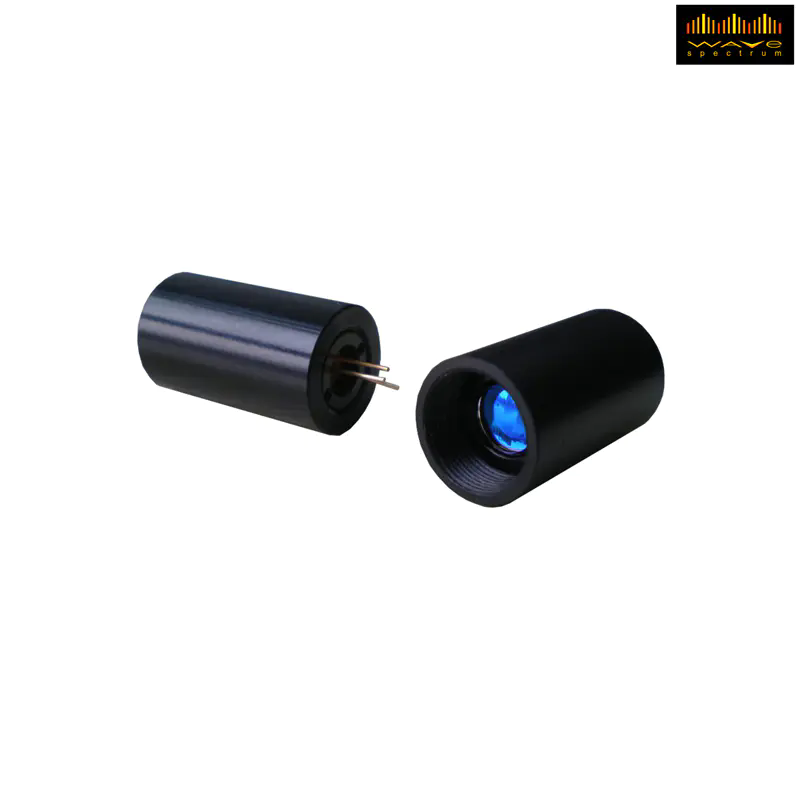How does Collimated Laser Diode work?
2025-09-10
In today’s rapidly advancing photonics industry, collimated laser diodes have become indispensable components across a wide range of applications, from medical imaging and industrial automation to optical communication and scientific research. Their ability to produce highly directional, low-divergence laser beams makes them ideal for tasks where precision, efficiency, and stability are critical. But what makes collimated laser diodes stand out compared to standard laser diodes? In this comprehensive guide, we will explore their working principles, technical specifications, practical benefits, and key considerations when choosing the right model for your application.
A collimated laser diode is a semiconductor-based laser source that integrates an optical collimation system to produce a beam with minimal divergence. Unlike standard laser diodes, which typically emit light in a naturally divergent pattern, collimated models use precision-engineered optics — often aspheric or cylindrical lenses — to transform the emitted light into a near-parallel beam.
Working Principle
Laser diodes generate coherent light when electrons in a semiconductor recombine with holes, releasing energy in the form of photons. However, without optical correction, this light spreads rapidly, making it unsuitable for long-distance precision applications. By integrating high-quality collimating optics, manufacturers can:
-
Reduce beam divergence to maintain focus over extended distances.
-
Improve beam quality by producing a more uniform, stable output.
-
Enhance optical coupling for applications requiring integration with fiber optics or imaging systems.
This combination of semiconductor laser efficiency with precise collimation delivers an optimized optical performance suitable for both laboratory and industrial environments.
Collimated laser diodes offer several key advantages that make them superior in many demanding scenarios:
High Precision and Low Divergence
One of the biggest differentiators is their ability to maintain tight beam control. For applications like laser scanning, spectroscopy, and medical diagnostics, a low-divergence beam ensures consistent results over variable distances.
Improved Optical Efficiency
By reducing energy loss caused by beam spreading, collimated laser diodes deliver higher optical efficiency, which translates to stronger illumination at the target point and better system integration for complex optical setups.
Compatibility with Fiber Optics and Imaging Systems
Collimated beams are easier to couple into fiber-optic systems, making them an ideal solution for optical communication and sensing applications. They also perform exceptionally well in imaging systems where beam uniformity and stability are essential.
Long-Range Applications
From LiDAR systems to alignment tools, collimated laser diodes excel in scenarios where maintaining beam focus over long distances is necessary.
Technical Specifications of Collimated Laser Diodes
When selecting a collimated laser diode, understanding the technical specifications is crucial to ensure compatibility with your system requirements. Below is an example of common parameters available from Wavespectrum:
| Parameter | Specification Range | Description |
|---|---|---|
| Wavelength | 405nm – 1550nm | Multiple wavelength options for different applications, including UV, visible, and IR. |
| Output Power | 1mW – 200mW | Adjustable to match application needs, from low-power imaging to high-intensity illumination. |
| Beam Divergence | < 1.0 mrad | Ensures a highly collimated, stable beam profile. |
| Beam Diameter | 1mm – 3mm | Optimized for integration into optical systems. |
| Operating Voltage | 3V – 5V | Compatible with standard electronic control systems. |
| Temperature Range | -20°C to +60°C | Designed for reliable performance in various environments. |
| Lifespan | >10,000 hours | Long operational life reduces maintenance costs. |
These specifications make collimated laser diodes suitable for sectors including industrial sensing, medical diagnostics, optical alignment, metrology, and more.
How to Choose the Right Collimated Laser Diode for Your Application
Selecting the right model requires evaluating several technical and environmental factors. Here are the most important considerations:
Determine the Required Wavelength
-
405nm – 532nm (Visible Spectrum): Ideal for biomedical imaging, fluorescence detection, and laser displays.
-
650nm – 850nm (Red to Near-IR): Widely used in alignment, barcode scanning, and spectroscopy.
-
980nm – 1550nm (Infrared): Suitable for optical communication and LiDAR systems.
Evaluate Beam Divergence and Diameter
If your application involves long-distance targeting or precise alignment, choose a diode with ultra-low divergence (<1 mrad). For imaging or microscopy, a smaller beam diameter provides better resolution and focus.
Assess Power Requirements
Higher power output allows longer-range projection but may increase thermal load. Balance optical performance with safety and heat management.
Consider Environmental Conditions
For industrial and outdoor applications, ensure the diode operates reliably under varying temperatures, humidity, and vibration levels.
Integration with Existing Systems
Compatibility with your optical, electronic, and mechanical systems is essential. Choose a diode with flexible mounting options and standardized electrical interfaces for seamless integration.
Frequently Asked Questions (FAQ)
Q1. What makes a collimated laser diode better than a standard laser diode?
A collimated laser diode integrates precision optics to create a near-parallel beam with minimal divergence. This enhances long-distance performance, beam stability, and system integration, making it ideal for demanding applications like spectroscopy, imaging, and fiber-optic communication.
Q2. Can collimated laser diodes be customized for specific applications?
Yes. Manufacturers like Wavespectrum offer customization options, including wavelength selection, power output, beam size, and housing design to match specific industrial, medical, and scientific requirements.
Future Trends and Innovations
As industries demand greater precision and efficiency, collimated laser diode technology continues to evolve:
-
Integration with AI-Driven Systems: Future designs will enable automated beam alignment and adaptive focusing.
-
Miniaturization: Compact designs will support portable medical devices and wearable sensors.
-
Energy Efficiency: Advanced semiconductor materials will improve power-to-light conversion, reducing heat output.
-
Higher Wavelength Diversity: Emerging applications like quantum communication require broader wavelength coverage, pushing innovation in multi-spectrum diode technology.
These advancements will further expand their role in sectors such as autonomous vehicles, precision manufacturing, and next-generation communication systems.
Collimated laser diodes have transformed the way optical systems operate by offering high precision, low divergence, and superior stability. Whether you are developing a medical imaging device, optimizing a LiDAR sensor, or designing an industrial measurement tool, these diodes deliver unmatched performance and reliability.
Wavespectrum specializes in providing high-quality collimated laser diodes with customizable parameters to meet your exact needs. Backed by extensive expertise and a commitment to innovation, we offer solutions that enable superior optical performance across diverse applications.
If you are looking for reliable, precision-engineered collimated laser diodes, contact us today to discuss your project requirements and discover how Wavespectrum can help you achieve optimal results.



